Artist Larry Bell: ‘Art is a teacher, it’s not an object’
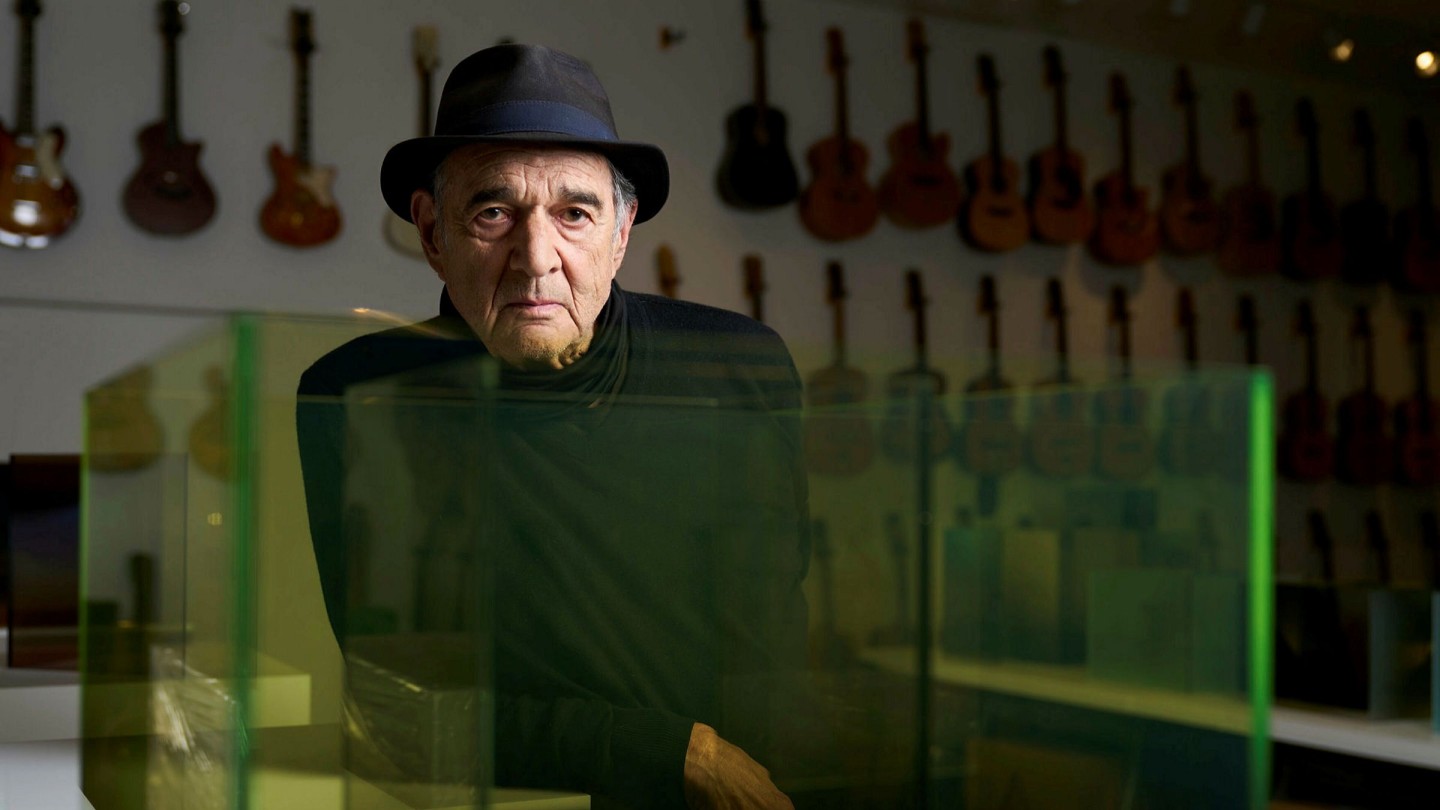
Roula Khalaf, Editor of the FT, selects her favourite stories in this weekly newsletter.
Although he has lived in Taos, New Mexico, since 1973, Larry Bell is still chiefly associated with the Light and Space movement that emerged in southern California in the 1960s. His early works epitomised the group: semi-mirrored glass cubes that, through their fleeting reflectivity, reacted to — as advertised — the light and space around them, deft exercises in highlighting the processes of perception.
Bell’s prodigious output over the years has also included installation, collage, works on paper, furniture and hanging tangles of Mylar which he calls “Light Knots”, but glass has remained at its core. In his Taos studio, shelves hold boxes of bevelled glass squares and triangles, seemingly in every colour under the sun; on wide tables, Bell, 82, experiments by fixing panels together into cubes and corners, cubes within cubes and open-topped boxes.
Some maquettes become works in their own right: several will be included in an exhibition of new work by Bell at Hauser & Wirth in London, opening May 13. Others are sent to a fabricator who recreates them as glass chambers, with walls eight feet high. Two of these will take centre stage at Hauser & Wirth.
“Art is a teacher, it’s not an object,” Bell says as we wander through his studio. “If you disavow being spontaneous and intuitive and improvisational, then you don’t trust yourself.” He gleefully tells how, for a current display of his work at Dia Beacon, New York, he proposed installing a new large-scale work on carpet. Curators at the museum were not keen. “They thought the carpet compromised the integrity of the work,” he says.
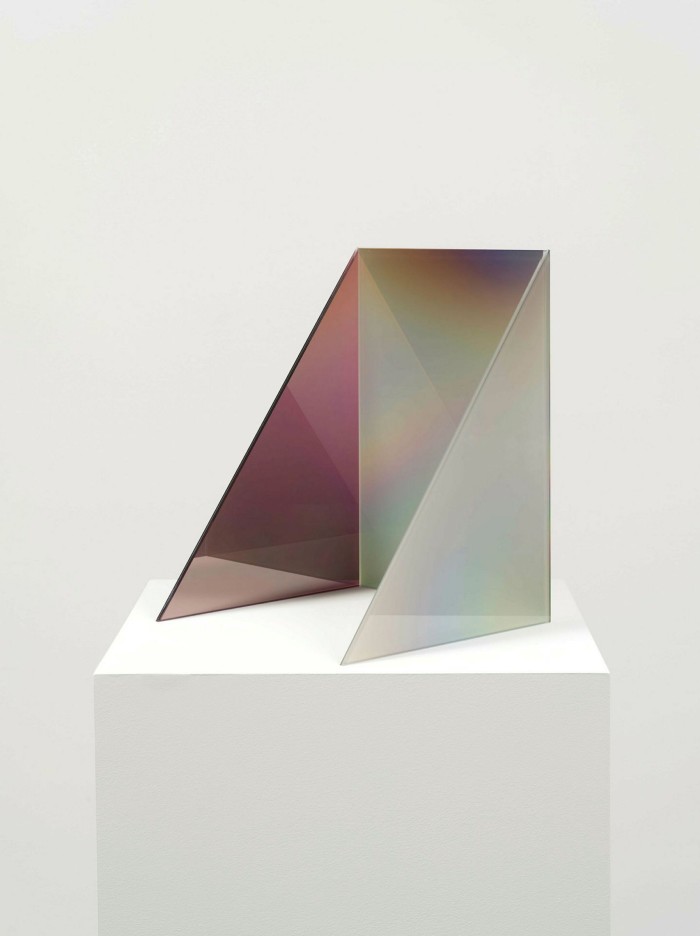
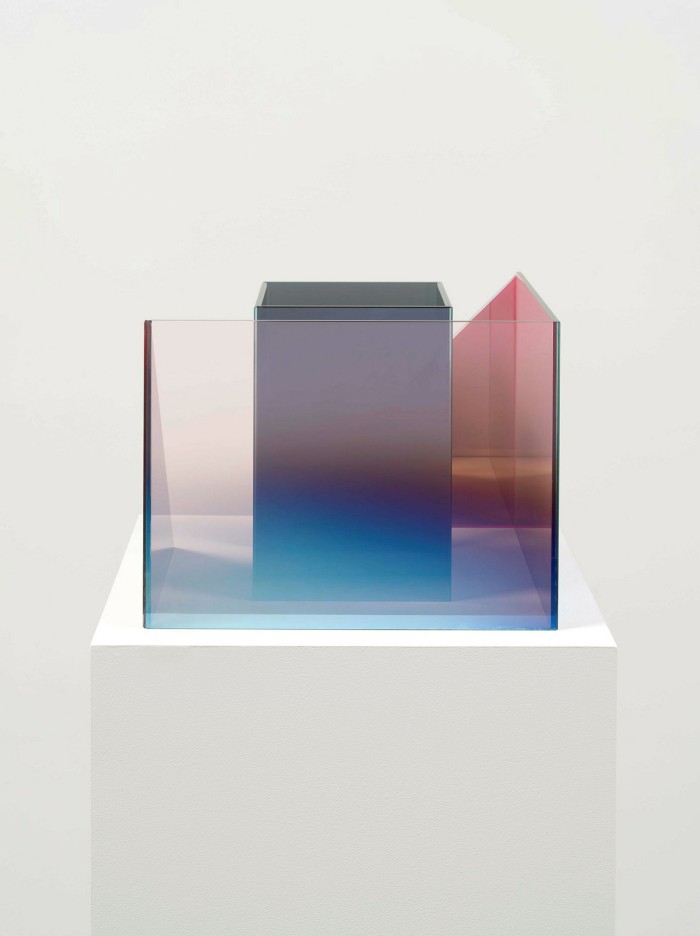
After Bell rigged up a cardboard version to demonstrate how the blue, green and frosted white glass panels would leak light if placed on the uneven concrete floor, they relented and asked him what colour carpet he had in mind. “At that moment, one of the curators walked by wearing this incredibly beautiful pink sweater. I said, ‘That’s the colour!’”
In the main, Bell has a solemn demeanour, but when something amuses him his face breaks into sunshine, his eyes crinkling around a warm smile. Though his art might at first seem aligned with the austere precepts of high minimalism as espoused by East Coast artists such as Donald Judd, it emerges from a life dedicated to joy, humour and aesthetic satisfaction. Bell chortles when he refers to his fellow artist’s fierce dogmatism. “I don’t think of myself as a minimalist. I never did.”
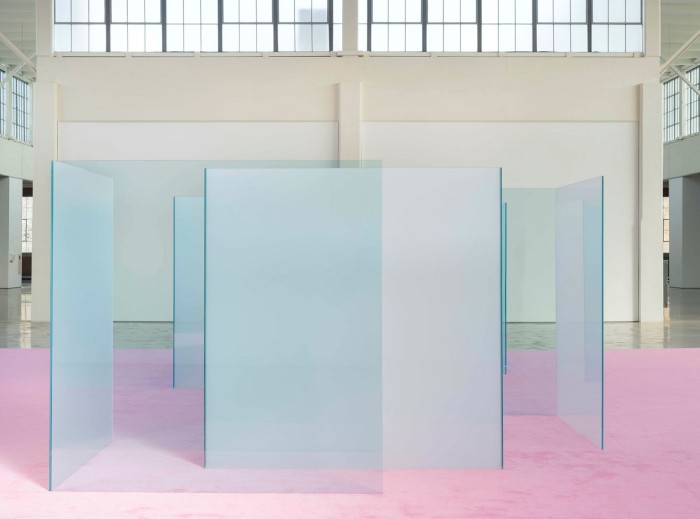
Bell, and others in the Light and Space movement, might better be seen as latter-day Impressionists: artists who used stridently modern means to capture ephemeral nuances of colour, luminosity and atmosphere. He was among the first artists to employ commercial manufacturing processes to remove any trace of the artist’s touch. Paradoxically, his work manages to be neither reductive nor heady nor impersonal, but endlessly open, surprising and delightful.
Bell struggles to explain why, over the past five years, colour has come to dominate his sculpture. He orders up glass in such evocatively named shades as “limoncello”, “kelp”, “blush” and “true fog”, and observes how the colours interact when placed together. But he started out as a painter and, though he has not put brush to canvas in decades, he strives to keep his sculptural practice, he says, “as fluid as a paintbrush and a palette”.
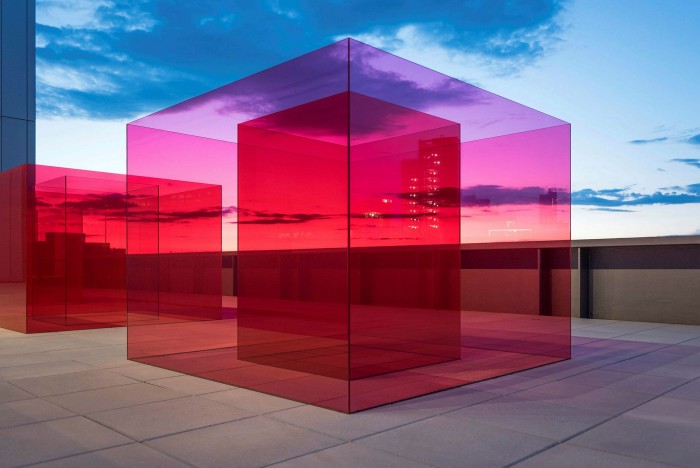
In 2017, for the Whitney Biennial, Bell’s imposing installation “Pacific Red (II)” (2017) spanned the Whitney Museum’s fifth-floor terrace. Six nested boxes, each side six feet high and eight feet wide, lined up in graduated tones from a faint rose tint through to deep carmine. Many were surprised to encounter Bell’s work in an exhibition that, as co-curator Christopher Y Lew puts it, focused on “community formation and social division”. But Lew argues that, by setting “Pacific Red (II)” against the Manhattan skyline, he and co-curator Mia Locks allowed the sculpture to absorb and reflect the urban social environment in all its complexity.
I ask Bell if his work has anything in common with the social sculpture of Dan Graham — an artist who has cited Bell as an influence on his semi-reflective glass pavilions. He flatly denies it. “I don’t see any reason to participate in anything other than what I know how to do,” he says.
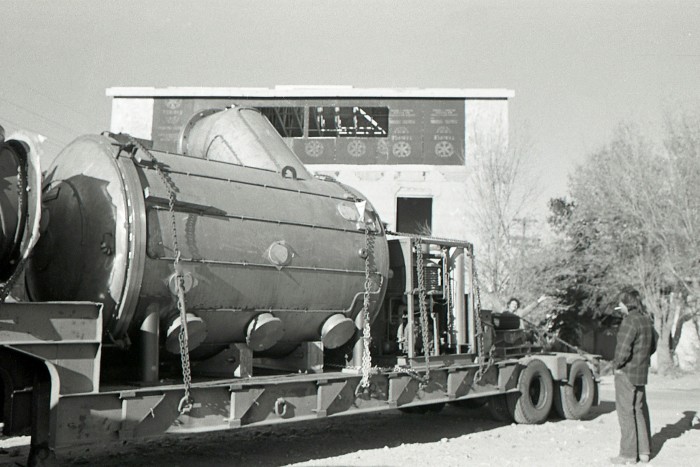
Through a farm gate to a field behind his studio, a sculpture similar to “Pacific Red (II)” — this one featuring frosted white glass encasing a smaller red box — sits on a concrete base. The piece is part of a body of work titled “Venice Fog”; the atmospheric effects of weather are enduring inspirations to Bell. “If the sky was clear,” says Bell, peering up at the windswept grey clouds, “the sun would be doing all kinds of interesting things on the interior of the frosted glass.” He points to a white streak down one side of the sculpture. “We have a lot of art-critic ravens in this neighbourhood.”
Back indoors, Bell walks around part of the studio that resembles a scientific laboratory, packed with grey devices bristling with cables and pipes, red and green buttons, toggle switches and dials. Many parts come from salvage sales at the nearby government laboratories in Los Alamos, where the atomic bomb was made. Dominating the studio is a huge vacuum chamber, a steel cylinder six feet in diameter with a hatch at one end, essential for his art. Bell calls it “The Tank”. He ordered it in 1968 for $68,500 — his entire savings at the time. “I didn’t have enough money to buy a piece of glass to stick in there! Most of my friends thought I was nuts.”
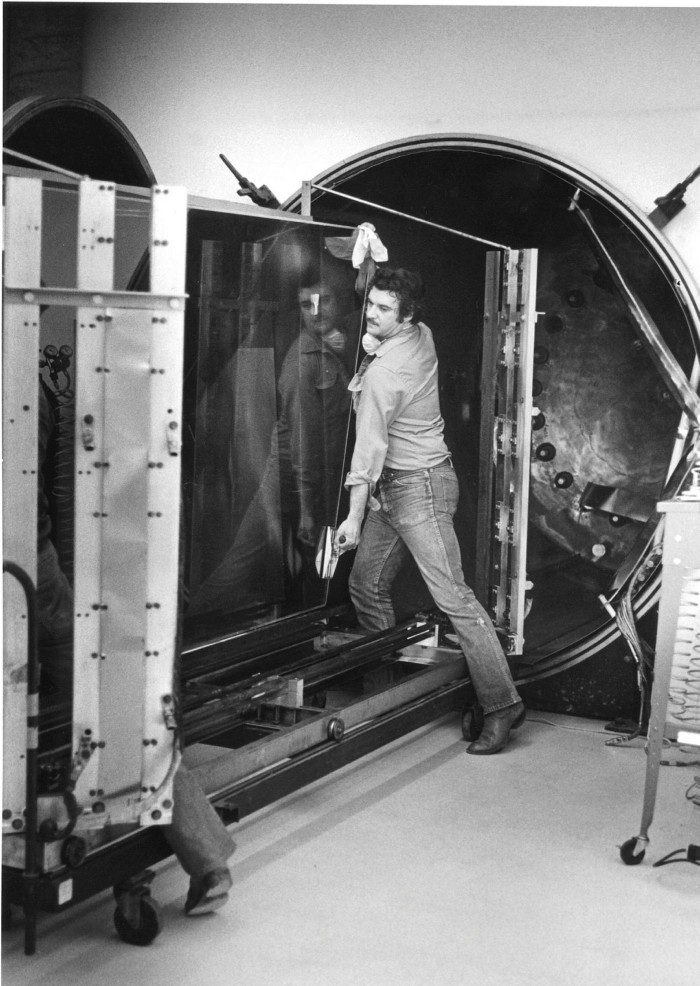
The Tank has been in regular use ever since. Bell, who professes no particular scientific aptitude, explains how the coating process works. In a vacuum, a substance — usually titanium, nickel chrome, aluminium or quartz — is heated so intensely that it vaporises, coating a sheet of glass (or any other material) held over it. Different substances produce different effects, from grey tints to mirrored chrome. For his small-scale sculptures, Bell coats coloured glass with semi-reflective finishes. (To his evident frustration, he has not yet devised a way to coat large pieces of coloured glass.)
When he moved from Venice Beach in California to Taos, The Tank moved with him, as did his collection of guitars. LA had become too crowded, with too many distractions, Bell explains. One of his closest friends, the ceramicist Ken Price, had moved to Taos in 1970, and on a visit Bell fell in love with the region’s climate, its clean air and its huge skies. “It’s easy to breathe,” he says.
His work, he admits, has been more or less ignored by the local art scene — “The stuff I make is not what people like to look at here” — but he doesn’t mind. “I’ve never been much of a consciously ambitious person,” he says. “I like to do what I do, and I try and get it better than the way I did it before. Each piece leads to a new life and a new way of thinking.”
To July 30, hauserwirth.com; diaart.org
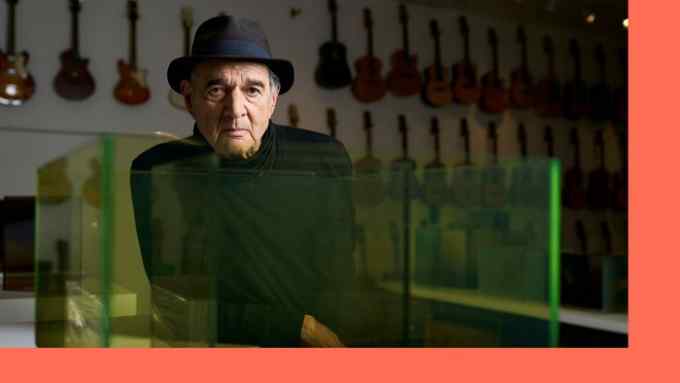
Comments